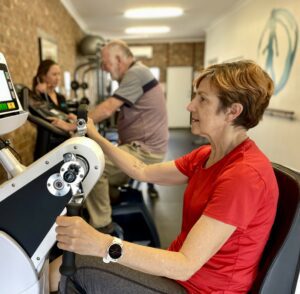Consistency in Exercise and Achieving Muscle Benefits
When it comes to reaping the rewards of your exercise routine, consistency is key. Whether you’re a beginner, enjoy being active regularly or a seasoned athlete, sticking to a regular workout schedule is crucial for building and maintaining muscle. Here’s why consistency matters and how long you can expect it to take to see noticeable muscle benefits.
The Science of Consistency
Consistency in exercise means performing physical activities regularly over an extended period. This regularity is vital for several reasons:
- Muscle Adaptation: Muscles need time to adapt to new stress. Regular exercise and sticking consistently to a set program ensures that muscles are consistently challenged, leading to growth and strengthening.
- Habit Formation: Consistent exercise helps in forming healthy habits, making it easier to stick to a routine in the long term.
- Progressive Overload: To build muscle, you need to gradually increase the resistance, sets or reps of your workouts. Consistency allows for a structured approach to progressive overload.
How Long Does It Take to See Muscle Benefits?
The time frame to see muscle benefits varies based on several factors, including your starting point, exercise intensity, frequency, and nutrition. However, here’s a general guideline:
Immediate Gains (minutes to hours):
- Endorphins: Improve mood right after exercise.
- Adrenaline and Noradrenaline: Increase rapidly at the onset of exercise, enhancing alertness and energy levels.
- Cortisol: Cortisol levels can rise during intense or prolonged exercise. It helps mobilize energy stores but should return to normal post-exercise with adequate recovery.
- Insulin: Insulin sensitivity improves shortly after exercise, enhancing glucose uptake by muscles and stabilizing blood sugar levels.
Initial Gains (1-4 Weeks):
- Neurological Adaptations: In the first few weeks, most of the strength gains come from your nervous system learning how to efficiently recruit muscle fibers.
- Increased Energy Levels: You may notice improved energy and prolonged mood, even if physical changes are not yet visible.

Increases in nerve recruitment and muscle fibre quality (4-8 Weeks):
- Increased Blood Flow: Exercise increases blood flow to bones muscles, delivering nutrients and oxygen that are crucial for their health.
- Muscle fibre contraction quality improves: When you exercise your muscles will be able to recruit all the muscle fibres needed. This helps us start to feel stronger through daily activities.
- Thyroid Hormones: Regular exercise can improve thyroid hormone levels, enhancing metabolism and energy levels over several weeks.
Visible Changes (8-12 Weeks):
- Hypertrophy Begins: Around the 8-week mark, muscle hypertrophy (growth) starts to occur so we start to feel a lot stronger.
- Improved Muscle Tone: Muscles may start to feel firmer and more defined.
- Enhanced Performance: You’ll experience improved performance in strength and endurance exercises.
Long-Term Benefits (12 Weeks – years):
- Sustained Muscle Growth: Continued exercise leads to sustained muscle growth and strength improvements.
- Increased Metabolism: Muscle tissue starts to better use fuel such as glucose throughout the day. Reduces risk of type 2 diabetes, improved metabolic and overall health.
- Sex Hormones (Estrogen and Testosterone): Long-term exercise can help regulate sex hormones, which is particularly beneficial for managing conditions like PCOS in women and maintaining testosterone levels in men.
- Adiponectin: Exercise can increase levels of adiponectin, a hormone involved in glucose regulation and fatty acid breakdown, over the long term.
- Bone Mineral Density (BMD): Noticeable changes in BMD usually take about 3 to 6 months if given the right stimulus and doing bone stimulating activities. Substantial and measurable increases in BMD typically take 6 to 12 months of consistent exercise. The most significant changes are often seen in weight-bearing bones such as the hips, spine, and legs.

Tips for Staying Consistent
I am staying consistent but am still not seeing changes?
- Are you doing the right type of exercise for your goals?
- Are you doing enough or are you doing too much?
Working with a qualified professional like an Exercise Physiologist can make sure that the exercise you are doing is going to help you reach your goals. We can tweak the exercises you enjoy to make sure you are getting the most benefit for your time.
Things to remember
Consistency is the cornerstone of any successful exercise regimen. By staying dedicated and patient, you’ll start to see and feel the benefits of your hard work. Remember, muscle growth and overall fitness improvements take time, but with persistence, the results will come. Stay committed, enjoy the journey, and celebrate your progress along the way.
Author: Maddie Warner, Accredited Exercise Physiologist




